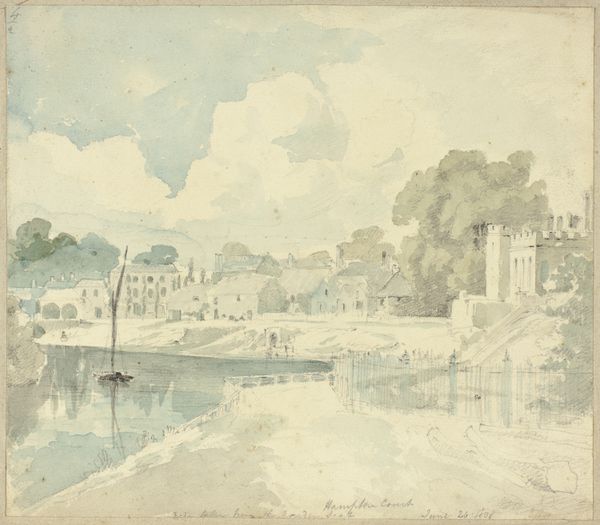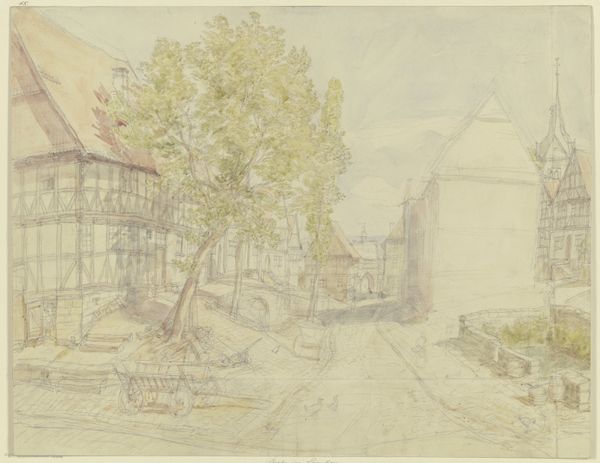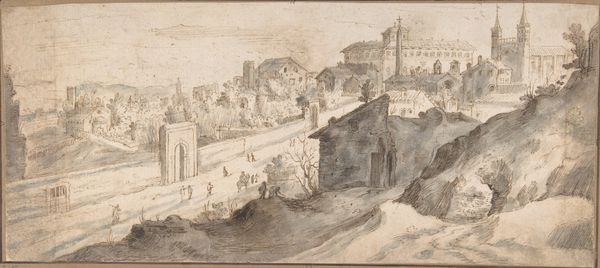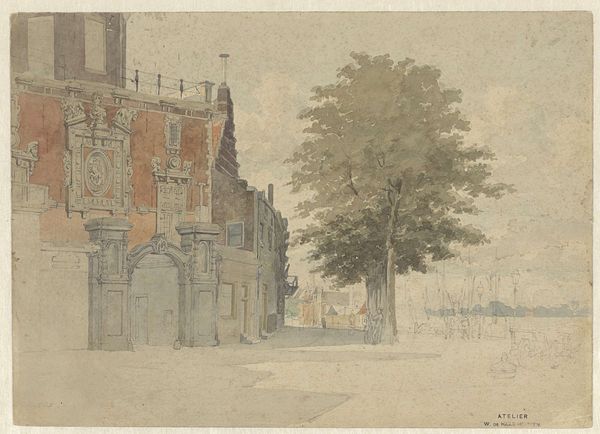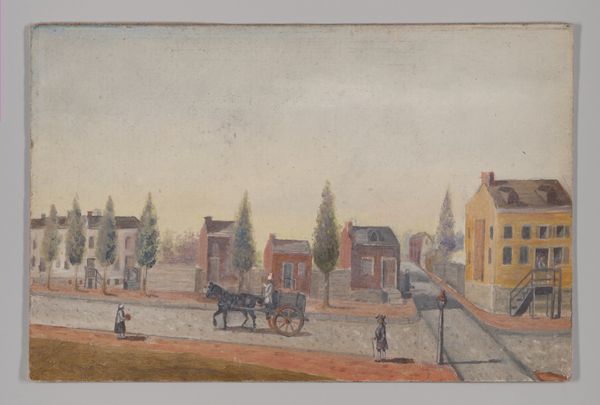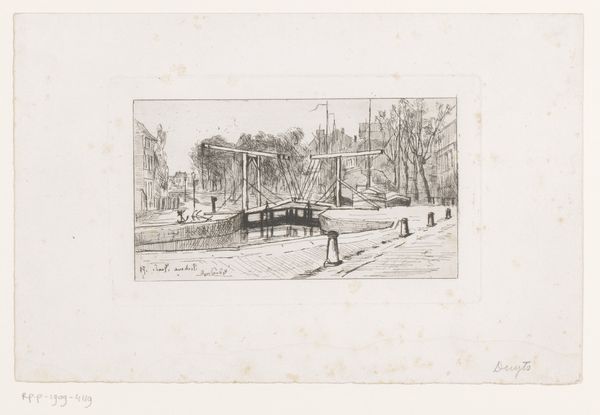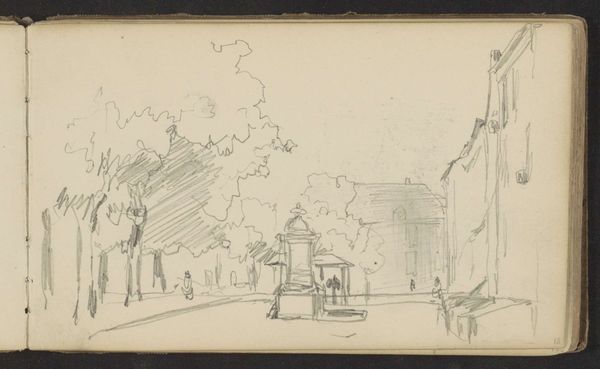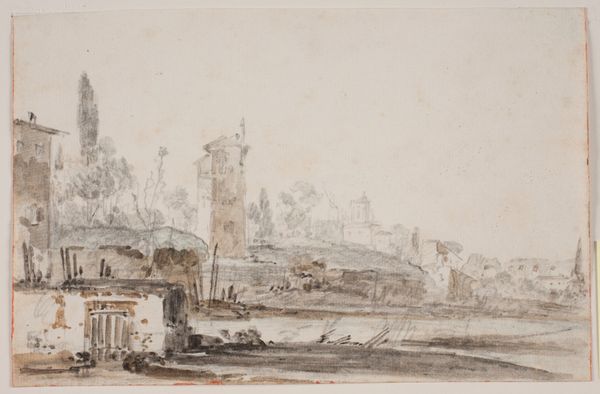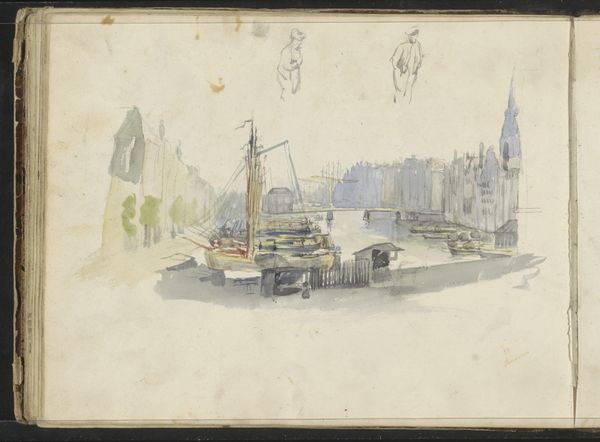
drawing, paper, watercolor, ink
#
drawing
#
baroque
#
landscape
#
paper
#
watercolor
#
ink
#
cityscape
#
genre-painting
Copyright: Public Domain
Curator: Standing before us, we have a drawing titled "Kanal mit Schleusentor, links kehrt eine Magd die Straße," which translates to "Canal with a Lock Gate, a Maid Sweeping the Street on the Left." It is crafted with ink and watercolor on paper, attributed to Johannes Huibert Prins. Editor: My initial reaction is that it's rather subdued in palette, almost faded, yet possesses a tranquil atmosphere. There’s a definite sense of everyday life unfolding; the reflections in the water add an intriguing depth. Curator: Indeed. The materials are significant here. Prins’s choice of ink and watercolor allows for a delicate portrayal of the urban landscape, typical of cityscape genre paintings of that era. One can appreciate how he manages to capture a moment through quite common material. The use of paper gives a light feel for the rendering, while requiring greater artisanal mastery for ink or watercolor use, doesn’t it? Editor: Absolutely. It's important to note the social dynamics hinted at within the scene. We see a woman performing manual labor – sweeping – in the foreground. How might her presence comment on gender roles and the social hierarchy within this urban environment? The architecture versus labour contrasts a kind of "cityscape within social life", wouldn’t you agree? Curator: An interesting consideration. The lock gate, though functional, also symbolizes a kind of controlled flow—paralleling perhaps, the regulated lives of the citizens depicted. This points to the burgeoning development of Amsterdam and a rising merchant class with the rise of Baroque aesthetic and style itself. We can appreciate both technical mastery of applying the media and witness of daily, working-class urban life at the same time. Editor: Considering the historical context is also crucial, particularly looking through the lens of gender. Who is represented, and whose stories remain untold, is a matter to consider, while seeing a tranquil moment frozen on a paper sheet. We can assume and suggest that there could have been other representations depicting more dominant social figures and leave that up for visitors to further debate? Curator: A wonderful point. It forces us to consider what wasn't chosen to be depicted. I appreciate how analyzing this cityscape offers a glimpse into 18th-century urban life through common materials such as paper and ink wash. Editor: Precisely! It underscores the role art plays in negotiating class structures and identities and reveals historical urban fabric for the modern-day public. A wonderful combination, after all.
Comments
No comments
Be the first to comment and join the conversation on the ultimate creative platform.


